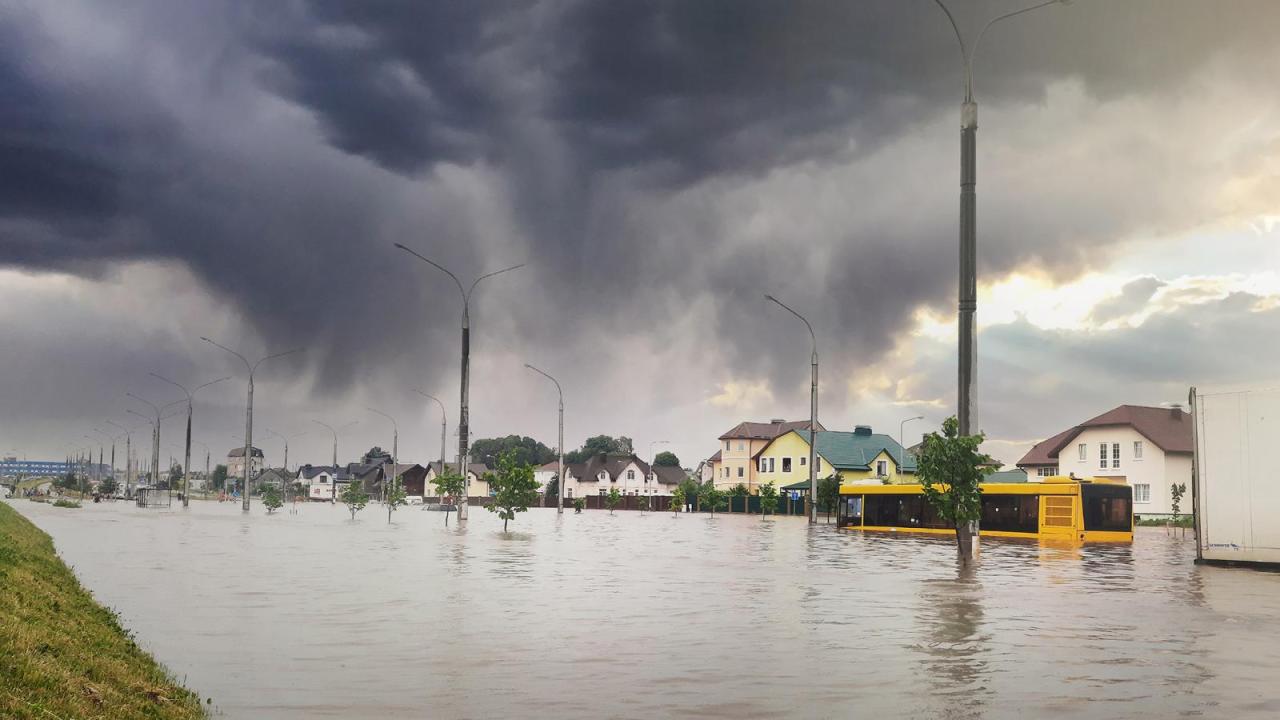
Over the last 20 years, large floods were associated with up to 25 percent higher death rates from major mortality causes in the U.S. compared to normal conditions. A new study in the journal Nature Medicine demonstrates the sweeping and hidden effects of floods—including floods unrelated to hurricanes, such as those due to heavy rain, snowmelt, or ice jams.
Scientists at Columbia University Mailman School of Public Health led the study in partnership with researchers at Arizona State University, Harvard University, and the University of Arizona.
Until now, there had been a critical knowledge gap about cause-specific flood mortality risks in the U.S. over time, and how risks may vary among groups within the population. The study’s findings provide information that could help public health agencies allocate resources.
In the U.S., population growth alone is projected to result in an estimated 72 percent increase in the population exposed to floods annually by 2050, before accounting for the effect of climate change in leading to more frequent river, coastal, and flash floods.
“Flooding is an urgent public health concern as sea level rise, rapid snowpack melting, and increased storm severity will lead to more destructive and frequent events,” says first author Victoria Lynch, PhD, post-doctoral research fellow at Columbia Mailman School. “Our results show that floods were associated with higher death rates for most major causes of death, even for rain- and snow-related floods that are less likely to generate rapid emergency responses.”
“In the U.S., floods have a devastating effect on society, yet a comprehensive assessment of their continuing health impacts had been lacking,” says Robbie M. Parks, PhD, assistant professor in Environmental Health Sciences at Columbia Mailman School and senior author. “Our study is a first major step in better understanding how floods may affect deaths, which provides an essential foundation for improving resilience to climate-related disasters across the days, weeks, months, and years after they wreak destruction.”
After collecting 35.6 million U.S. death records from 2001 to 2018, the researchers used a statistical model to calculate how death rates changed in three-month periods following large floods when compared to equivalent periods in normal conditions.
Residents of 2,711 counties, covering over 75 percent of the U.S. population, experienced at least one large flood during the study period. Heavy rain was the most common cause of large flood events with the next most common cause due to snowmelt in the Midwest and tropical cyclones in the southeast.
The researchers found the largest overall increases in injury death rates among older people (24.9 percent) and females (21.2 percent) during the month of tropical storm/hurricane-related flooding, with increases in death rates associated with heavy rain-related flooding for infectious diseases (3.2 percent) and cardiovascular diseases (2.1 percent). Snowmelt-related floods were associated with higher death rates for respiratory diseases (22.3 percent), neuropsychiatric conditions (15.9 percent), and cardiovascular diseases (8.9 percent).
The rise in infectious diseases is likely related to disruptions to drinking water and sewage infrastructure that can lead to waterborne disease transmission. Chronic and neuropsychiatric conditions may relate to stress from persistent flood-related disruptions. Socioeconomic factors that drive health outcomes in communities vulnerable to floods, as well as residents’ ability to evacuate during emergencies and respond to their aftermath, may also play important roles.
“The majority of our understanding of flood-related health impacts comes from major events like Hurricane Katrina or Harvey that, despite their devastation, are a sample of a larger phenomenon,” says Jonathan Sullivan, PhD, assistant professor in Geography, Development, and Environment at the University of Arizona and co-author. “Our study shows that even floods caused by snowmelt or heavy rain, each uniquely driven by changes to climate and development, elevate mortality months after the fact providing critical knowledge of how to manage and adapt to floods.”
Previous research on climate and health by the authors of this paper has found elevated death rates after tropical cyclones in the U.S., including disproportionate increases in excess deaths in socially vulnerable communities of color, and that tropical cyclones are associated with the spread of waterborne infectious diseases.
Additional co-authors are Aaron Flores, Arizona State University; Sarika Aggarwal and Rachel C. Nethery, Harvard Chan School of Public Health; and Marianthi-Anna Kioumourtzoglou, Anne E Nigra, and Xicheng Xie, Columbia Mailman School of Public Health.
The study was supported by the National Institute of Environmental Health Sciences (grants ES007322, ES033742, ES009089, AG093975, ES007142).
Helloo there, juet became alert to your blog through Google, andd fkund that iit iss eally informative.
I’m going to watch ouut forr brussels. I’ll apppreciate
if you contijue tthis in future. A lot oof pople wil bbe benefitedd frm your writing.
Cheers!
cost amoxil – combamoxi.com cheap amoxicillin online
Очень интересная статья! Я был поражен ее актуальностью и глубиной исследования. Автор сумел объединить различные точки зрения и представить полную картину темы. Браво за такой информативный материал!
https://t.me/Top_BestCasino/6